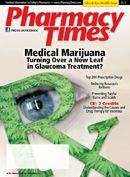Publication
Article
Pharmacy Times
Compounding Hotline
Author(s):
Your Compounding Questions Answered
Q:
Could you please provide me with a formulation for compounding caffeine citrate?
A:
Caffeine USP is a white crystalline powder or “silky white crystal.” It has a molecular weight of 194.2 when anhydrous. It also occurs as the monohydrate, which is efflorescent in air and is soluble in water 1:50; in alcohol 1:75. The monohydrate is stored in airtight containers.
Caffeine citrate (“citrated caffeine”) may be compounded easily by combining equal amounts of caffeine and citric acid. Citrated caffeine is a white, bitter-tasting powder with a molecular weight of 386.3. Precaution is advised when caffeine is written: verify that the prescriber did not intend caffeine citrate—an overdose (or underdose) could occur if verification is not obtained.
Caffeine is a methylxanthine and, like theophylline, inhibits phosphodiesterase; it has an antagonistic effect at central adenosine receptors. It stimulates the central nervous system, especially the higher centers, producing wakefulness and increased mental activity.
Orally administered caffeine is absorbed readily and widely distributed. Absorption when given intramuscularly can be slower than when given orally. Rectal absorption is slow and erratic. Caffeine passes into the placenta and saliva and is present in low concentrations in breast milk. Metabolism of caffeine in adults is almost completely hepatic; its metabolites are excreted in urine. Neonates have dramatically less capacity to metabolize caffeine—until hepatic metabolism is developed significantly (at about 6 months of age), it is mostly excreted unchanged in urine. Elimination half-lives vary greatly—3 to 7 hours for adults and possibly greater than 100 hours in neonates.
Caffeine’s stimulation of respiration and its long half-life make it a useful oral or injected short-term treatment for apnea in premature neonates. The initial dose for caffeine citrate is 20 mg/kg (equivalent to 10 mg/kg caffeine), followed by maintenance dosing of 5 mg/kg of caffeine citrate daily. Before starting caffeine therapy in neonates, blood levels should be checked if the patient was given theophylline, which is metabolized to caffeine in infants, or if the mother consumed caffeine before delivery. â–
Mr. Erickson is director of professional affairs at Gallipot Inc.
E-mail your compounding questions to: [email protected].

Newsletter
Stay informed on drug updates, treatment guidelines, and pharmacy practice trends—subscribe to Pharmacy Times for weekly clinical insights.






